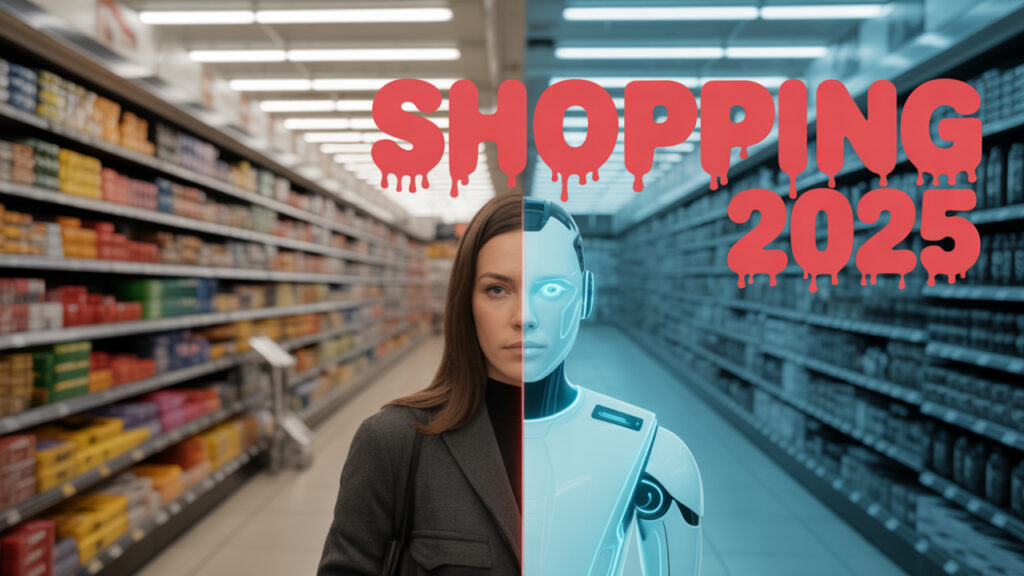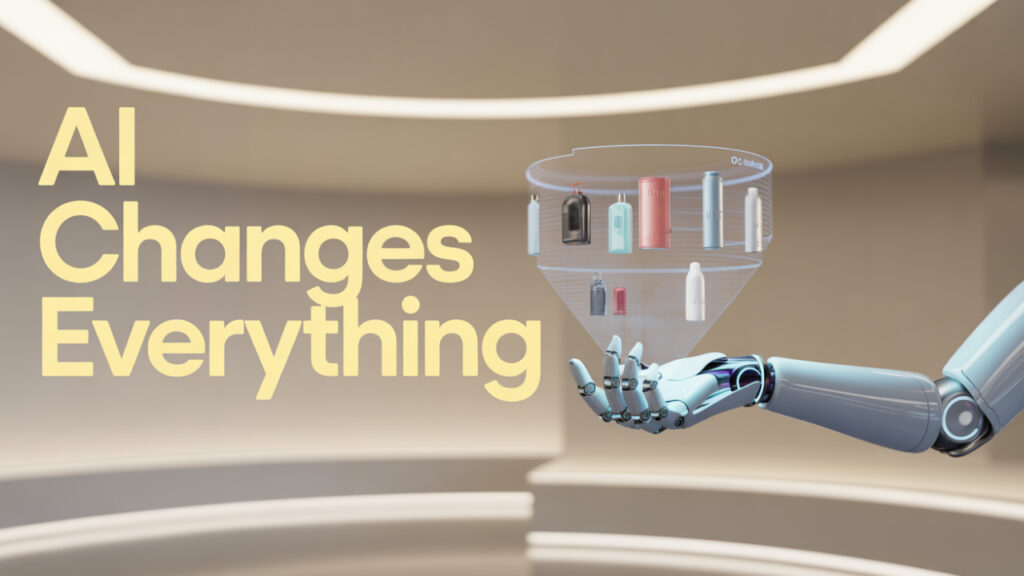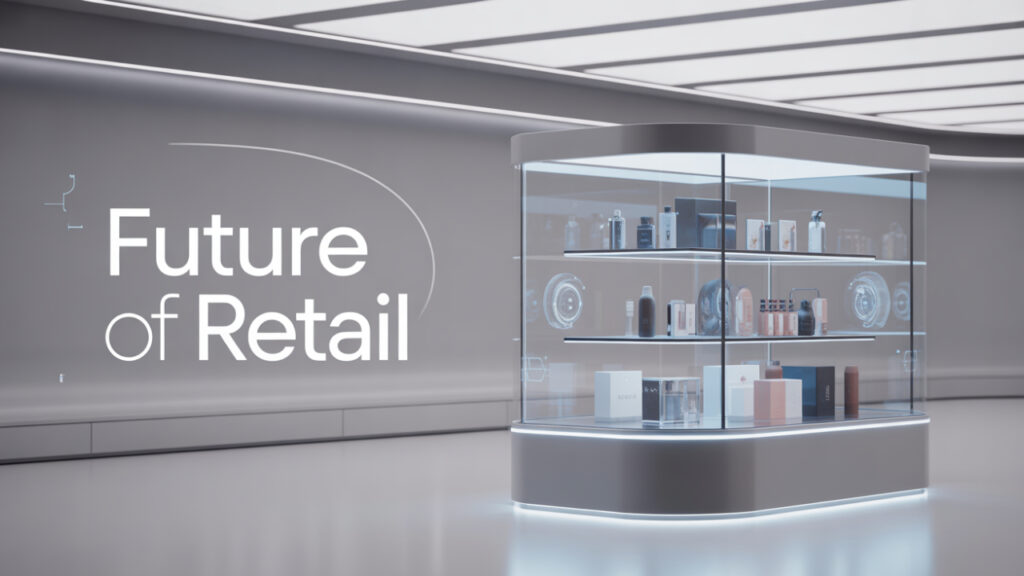In an age where convenience is king and personalization is expected, Artificial Intelligence (AI) is rapidly changing how we shop. From online recommendations and dynamic pricing to smart inventory and virtual try-ons, AI is deeply woven into every stage of the consumer journey.
But this isn’t just about technology. It’s about how our shopping behaviors, preferences, and expectations are evolving because of AI. Whether you’re a consumer looking for better deals or a business trying to stay ahead, understanding how AI is transforming shopping habits is no longer optional—it’s essential.
In this comprehensive guide, we’ll explore over a dozen ways AI is influencing shopping behavior, along with real-world examples and future predictions. Let’s unpack it all.
1. The Rise of Hyper-Personalization
AI Understands You Better Than You Think
One of the biggest impacts of AI on shopping habits is hyper-personalization. Gone are the days when every shopper saw the same homepage, the same ads, or the same email campaigns. AI enables companies to use browsing data, purchase history, preferences, and even location to tailor the entire shopping experience.

Real Examples:
Amazon uses machine learning to recommend products based on your search patterns and past purchases.
Spotify’s AI creates personalized playlists—and the same logic is used in e-commerce to recommend personalized product bundles.
Netflix-style recommendation engines are now being used by fashion brands to suggest clothing combinations or seasonal styles.
This AI-driven personalization is not just smart—it’s addictively convenient. As a result, customers are developing a habit of expecting personalization in every shopping interaction.
2. Visual and Voice Shopping: Search Without Typing
Visual AI Is Changing How We Discover Products
Today, people don’t always describe what they want in words. With AI-powered visual recognition tools, you can upload a photo and instantly find similar products online. This has transformed the discovery stage of shopping.
Visual Search in Action:
Google Lens lets users scan clothes, accessories, or furniture to find similar items across the web.
Apps like Pinterest and ASOS use visual AI to suggest outfits based on a single image.
At the same time, voice-enabled shopping is becoming increasingly popular. Devices like Amazon Alexa, Google Assistant, and Siri allow users to reorder items, add to carts, or track deliveries—just by speaking.
These technologies are forming new shopping habits where typing is no longer necessary.
3. Dynamic Pricing and Smart Discounts
Price Isn’t Fixed Anymore—AI Knows What You’ll Pay
AI allows retailers to shift pricing dynamically based on demand, time, competitor prices, and even user behavior. This means two users may see different prices for the same item based on how likely they are to buy.
Common Uses:
Travel websites adjust ticket prices in real time based on searches and demand.
Retailers use AI to send personalized coupon codes when a customer hesitates to check out.
Consumers are becoming more price-savvy, knowing that prices fluctuate frequently, and are starting to wait for the “right moment” to buy—often using browser extensions or shopping bots to help them.
4. AI-Powered Product Discovery
Smarter Search, Better Results
AI helps users find exactly what they need—even when they’re not sure what they’re looking for. AI-enhanced search tools now understand natural language, context, and user intent.
For example:
Typing “cozy sofa for small living room” brings better results than ever before.
E-commerce platforms now interpret vague queries and offer precise suggestions, thanks to Natural Language Processing (NLP).
As search becomes more intelligent, users are forming habits of asking questions naturally, trusting that AI will deliver relevant results.
5. Virtual Try-Ons and Augmented Reality
See It Before You Buy It
AI and Augmented Reality (AR) let users virtually try on clothes, makeup, or even furniture—eliminating uncertainty and reducing return rates.
Brands Leading the Way:
Lenskart, Warby Parker, and Ray-Ban let users try on glasses using facial tracking.
Sephora’s Virtual Artist allows customers to try makeup shades in real-time.
IKEA Place uses AR to place furniture in your living room via smartphone camera.
As a result, consumers are shopping more confidently, relying on AI to visualize the product in real-world settings.
6. AI in Customer Support and Chatbots
Instant Help, 24/7
The traditional model of waiting for customer support is fading. AI-powered chatbots are available round-the-clock to answer product questions, assist with orders, and solve issues instantly.

Benefits include:
Instant problem resolution
Order tracking without human interaction
Multilingual support
This is creating a behavioral shift: shoppers now expect fast, accurate support without calling or emailing anyone.
7. Predictive Analytics and Inventory Management
AI Knows What You’ll Buy Next
Retailers are using AI not just to respond to customers, but to predict what they’ll need next.
Use Cases:
Predicting seasonal demand
Recommending reorders (e.g., pet food, supplements)
Sending timely reminders (e.g., “You’re almost out of printer ink”)
This predictive shopping habit leads to more subscription-based models, where customers let the system auto-order recurring products—saving time and effort.
8. AI Influences Social Shopping Trends
Shopping on Social Media Gets Smarter
AI is now baked into platforms like Instagram, TikTok, and Facebook, helping brands display more relevant product ads, and letting users shop without leaving the app.
Social commerce features like:
Product tagging
Influencer campaigns
AI-curated feeds
…are training users to shop impulsively and trust social media as a legitimate storefront.
9. Ethical Shopping Powered by AI
Shopping with Purpose
Consumers are becoming more aware of ethical and environmental issues. AI helps by analyzing product origins, sustainability ratings, and ethical manufacturing practices.
Now, platforms can label items as:
“Eco-friendly”
“Fair trade”
“Carbon neutral”
This is encouraging more conscious consumer behavior, especially among younger audiences.
10. Fraud Detection and Secure Payments
Safer Shopping with AI
One of the unsung heroes of AI in retail is fraud detection. AI algorithms monitor unusual activity, detect scams, and secure payment gateways.
Benefits for consumers:
Peace of mind when shopping online
Instant alerts for suspicious activity
One-click, secure payments
Trust in e-commerce has increased, thanks in large part to AI-powered safety measures.
11. AI-Driven Loyalty and Rewards
Smarter Loyalty Programs
Traditional loyalty programs are being replaced with AI-based systems that track more than just purchases. These systems consider:
Engagement on social media
Repeat visits
Wishlist activity
Product reviews
This data helps companies reward customers based on overall value, not just transactions. Consumers are adjusting their behavior to maximize rewards by interacting more across platforms.
12. Subscription Shopping and Auto-Replenishment
Never Run Out of Essentials Again
AI enables auto-replenishment features that track usage rates and automatically reorder items when you’re running low.
For example:
Amazon Dash Replenishment services reorder printer ink or laundry detergent before you run out.
Grocery apps suggest weekly restocks based on previous orders.
This shift is forming a habit where shoppers no longer actively shop for basics—they rely on AI to do it for them.
13. AI and the Rise of Micro-Moments
Instant Shopping Based on Real-Time Intent
Micro-moments refer to small windows of opportunity where consumers act on an immediate need. AI capitalizes on these moments by:
Pushing notifications
Showing time-sensitive offers
Offering quick-buy options
For example, you’re watching a cooking video, and an AI-powered ad offers to deliver ingredients in 30 minutes. These “shop now” triggers are shaping how and when people make buying decisions.
14. Data-Driven Decisions: AI’s Role in Shaping Trends
Retailers React Faster Than Ever
AI gathers and analyzes data from millions of shoppers, giving brands real-time insights on:
Which products are trending
What features users care about
How to improve customer journeys
In turn, companies adapt instantly, and customers develop habits based on what’s trending now—not months later.
15. The Future of AI in Shopping
We’re just getting started. Here’s what’s on the horizon:
AI-powered virtual stores with interactive 3D environments
Emotion detection AI that reacts to how you feel while shopping
Digital shopping assistants that act like your personal buyers
These futuristic features will make shopping even more immersive, efficient, and tailored to individual lifestyles.
Conclusion: Man + Machine = Smarter Shopping
The transformation of shopping habits through AI isn’t about machines replacing humans—it’s about machines enhancing human decisions.
Shoppers are becoming more empowered, informed, and selective. At the same time, retailers are becoming faster, smarter, and more responsive to user needs.
AI has turned shopping into a real-time, data-driven experience—and this is just the beginning. The lines between physical and digital, needs and wants, shopping and discovery—are all being blurred by intelligent systems that adapt and learn from every click, swipe, and search.
The future belongs to those who understand this transformation—and learn to shop smarter with AI on their side.




Ƭrying to find a trusted painting contractor? Here’s
a naqme to remember: **Cook’ѕ Simple Painting**.
yes
I go to see daily some web sites and blogs
to read articles or reviews, however this website presents quality based content.
Thanks
It’s genuinely very difficult in this active life to listen news on Television, therefore I simply use internet
for that reason, and take the newest information.
ok
Please let me know if you’re looking for a article author
for your weblog. You have some really great articles and
I think I would be a good asset. If you ever want to take some
of the load off, I’d really like to write some content for your blog in exchange for
a link back to mine. Please send me an e-mail if interested.
Regards!
ukashaceo@gmail.com
It’s hard to find educated people on this subject, however, you
sound like you know what you’re talking about! Thanks
Hi all, here every one is sharing such know-how, therefore it’s good
to read this web site, and I used to visit this blog everyday.
Hello there! I simply wish to give you a huge thumbs up for the great info you’ve got here on this post.
I will be coming back to your site for more soon.
ok
Hello there! Would you mind if I share your blog with my faacebook group?
There’s a lot of people that I thinnk would really enjoy
your content. Please let me know. Thank you
yes Share
Gredat post. I used to be checking continuously this weblog and I’m impressed!
Extrremely helpful information particularly the closing paart
🙂 I handle ssuch information a lot. I was seeking this particular info for a long
time. Thanks and best of luck.
I don’t even know how I ended up here, but I thought this post was
good. I do not know who you are but certainly you’re going to a famous blogger if you are not already ;
) Cheers!
Want to Increase Your Website Authority & Traffic?
You can certainly see your enthusiasm within the article you write.
The world hopes for more passionate writers like you who are not
afraid to mention how they believe. Always go after your heart.
Thanks
I visited various blogs but the audio quality for audio
songs present at this web page is really superb.
Having read this I thought it was rather enlightening. I appreciate you finding the time and effort to put
this article together. I once again find myself spending way too much
time both reading and leaving comments. But so what, it was still worth
it!
Hi there, I discovered your site by the use of Google at
the same time as searching for a comparable matter, your
website got here up, it appears great. I have bookmarked it in my google
bookmarks.
Hi there, just turned into aware of your blog thru Google, and found that it is truly informative.
I am gonna be careful for brussels. I’ll be grateful in case
you proceed this in future. Numerous other folks can be benefited out
of your writing. Cheers!
At this time it sounds like Movable Type is the preferred blogging platform out there right now.
(from what I’ve read) Is that what you are using on your blog?
i don’t know
I’m not that much of a internet reader to be honest but your blogs really nice, keep it up!
I’ll go ahead and bookmark your website to come back in the future.
Cheers